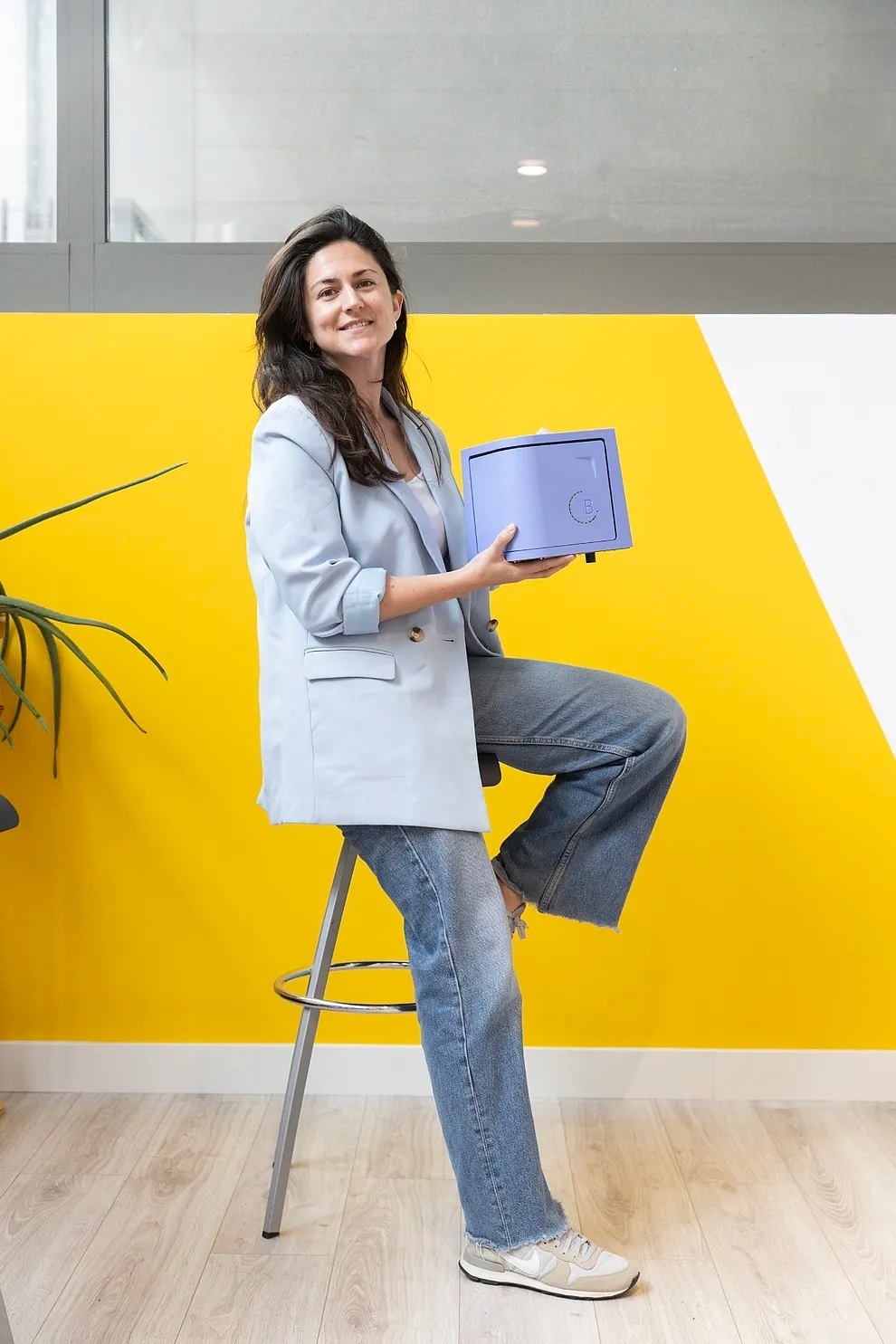A box is going to revolutionize the way we face breast cancer in the coming years. It is called The Blue Box and is, as its name suggests, a small blue box that within its simplicity has the power to detect early on, through urine and in just 30 minutes, the presence of this disease.
Behind this invention is a young Spanish biomedical engineer: Judit Giró Benet (Tarragona, 1996). Her idea arose while studying at the University of Barcelona, being in contact with various hospitals and doctors. "If dogs are capable of smelling cancer, why not develop a technology that imitates their olfactory system?" she thought. It was the project she developed in her final degree project and ended up becoming a small machine that captures odors and with artificial intelligence translates them into electronic signals that can be processed by software. Later, she perfected it thanks to a scholarship that opened the doors of the University of California, where she pursued a master's degree. "The results were so good that I set up a company there, along with a classmate," she explains.
Back in Spain, testing her technology with urine samples from hospitals and the support of nearly two million euros in public and private funding have led Judit to plan to commercialize her box in 2026, "if all goes well," she insists throughout the entire interview. Her company - which already has six employees and a lot of "collaboration from external teams," she points out - is closing a three million euro investment round and she has received various international awards and recognitions. One of them, The Rose Project, from Häagen-Dazs, a $100,000 grant for female entrepreneurs that touches her especially "because it symbolizes how the landscape is changing; we are talking about women doing things for women, and that is very relevant," she asserts.
Question. The color associated with breast cancer is pink, why did you choose the name The Blue Box?
Answer. It's simple. The goal is for this system to reach everyone, that's why we looked for a name that was very straightforward, something easy to remember. The appeal of the Blue Box is not in the science it includes, but in how easily accessible it is.
Q. How reliable is this system in detecting a tumor?
A. It is very high. In numbers, we are talking about it being 15% more sensitive than a mammogram, and six times cheaper.
Q. How can we access the device?
A. It will be available in gynecological consultations. The initial idea is to include this test in routine annual check-ups, in addition to the usual ones. It's not about replacing one check-up with another, but about complementing the ones we already have. The more screenings, the better.
Q. Will it be available in public and private hospitals?
A. For now, we will only find the blue box in private centers because they find it easier to purchase technology. The test will be carried out in the consultation room, on the same day as the check-up, and will cost around 46 euros, which will be charged to the patients. But it's only a matter of time: it will also reach public hospitals, we just need to participate in a tender; the process in this case is slower, but it's also a way to ensure it's more democratic.
Q. Could this technology be extended in the future to other types of cancer?
A. Yes, exactly. The idea is to train artificial intelligence so that with the same hardware, it can also detect other tumors. I'm keeping my fingers crossed for that to happen.
Q. Why did you start with breast cancer?
A. Because nowadays it is the most treatable, but at the same time, it is also the one that kills the most women. It's an inconsistency, and a big part of the problem is that we are not able to detect it early enough because the technologies we have to detect it in time are not sufficient.
Q. Could The Blue Box be used to diagnose other women's health issues?
Its technology may be useful for detecting endometriosis or even some conditions like depression; these could be future avenues of exploration.
Q. Could you have developed this box in Spain without going through California?
It would have been different. Right now, the science in the US is facing challenges due to the change in Administration... Starting the project here was a success because hospitals have collaborated a lot, and a large number of patients have wanted to participate in pilot studies.
Q. It seems that in our country, engineers are treated better than scientists...
A. In science, competitive salaries are not paid, and researchers are not adequately recognized, but we are going to work in the private sector, and companies value us based on market competitiveness. That's why our issue is not about salary, it's different: the problem is that we can't find jobs that we enjoy. You graduate with a backpack full of dreams and you face reality: in Spain, you can only be a salesperson. That's why so many engineers decide to start their own company despite the risks, to have the opportunity to develop projects that fulfill us, that's what we studied for so many years and so hard.
Q. Choose three words to describe yourself.
A. Hardworking, analytical, and optimistic.
